Excerpts from Jim Conrad's
Naturalist Newsletter
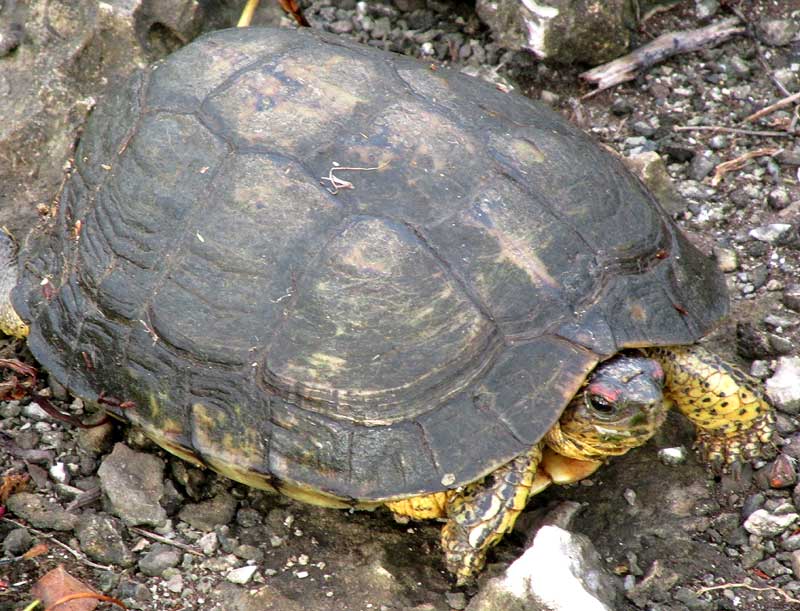
from the January 4, 2015 Newsletter issued from Río Lagartos, on the Yucatan Peninsula's northern coast (~N21.60°, ~W88.16°), Yucatán state, MÉXICO
FURROWED WOOD TURTLE
Where the savanna south of town abruptly meets the marshes, the soil atop the limestone is so thin that only a few grasses, cacti and scattered scrubby bushes can get hold. In this harsh environment a land turtle turned up showing little concern about having several birders hovering around him. That's him above.
In the Yucatan several times I've encountered Red-cheeked Mud Turtles, so I figured any boxy-type land turtle with red head-markings was that. However, on this turtle the markings didn't look right, plus mud turtles bear little, finger-like "barbels" beneath their chins and this one lacked barbels. You can see the Red-cheeked Mud Turtle at www.backyardnature.net/yucatan/mud-turt.htm.
Below, a close-up of our savanna turtle's head displays a different facial pattern, no barbels on the throat, and greenish plant material stuck to his face.
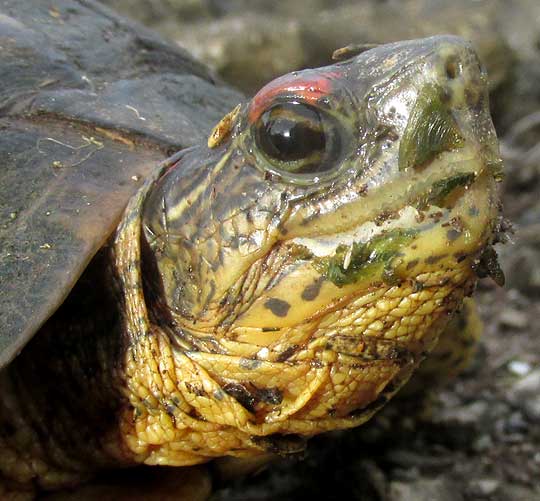
Also, there's something funny going on with this one's upper "lip." You can see it better closer up below:
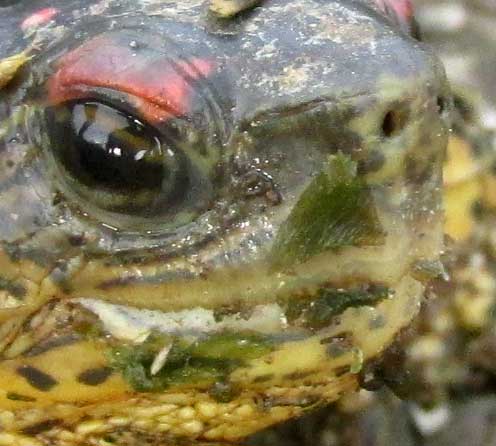
The front of the upper mandible of mud turtles is sharply hooked. This turtle's upper mandible instead of being hooked is indented. Well, if you're a vegetation eater as this turtle seems to be, such a serrated cutting tool might come in handy. Blades of the best scissors aren't smooth where they come together but rather are serrated. Whatever the reason for having such an indented snout, it meant to me that here was something other than a mud turtle.
Some books call our savanna turtle the Furrowed Wood Turtle. It's RHINOCLEMMYS AREOLATA, distributed from southeastern Mexico south into Honduras, where it inhabits tropical and subtropical savannas. The shape of this species' top shell, or carapace, is somewhat distinctive in that it's a little flattened along the top where often in other turtles there's a low, backbone-like ridge, plus the carapace is widest at the back instead of the middle, and the carapace's front marginal side scales flare outward somewhat. On the face, the "red eyebrow" is seen on most mature individuals, but not all.
Authors say that earlier this species was abundant, but that it's population has plummeted, mostly because of destruction of habitat -- especially by fencing in of savanna grasslands for cattle ranching -- and from local people eating them. Landowners often burn their grasslands believing that it enriches the soil, so often turtles are found with parts of their limbs missing.
Furrowed Wood Turtles feed mainly on vegetation, especially tender new shoots and fruits, though sometimes it eats insects, too.
from the August 2, 2015 Newsletter issued from Yuxunah, 20kms southwest of Chichén Intzá, Yucatán, MÉXICO
A FURROWED WOOD-TURTLE'S PLASTRON
In my first week at Yaxunah some kids told me about land turtles living around a pool in the garden. As soon as I showed interest they found one wedged in a dark hole where two rocks came together and brought it to me. It was a Furrowed Wood-Turtle, whose characteristic red head-markings you can see below:
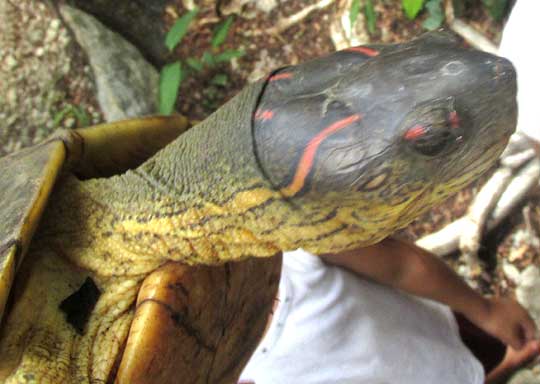
In our previous encounter, we were unable to get a shot of the scale configuration on the turtle's lower shell, or plastron, often needed during turtle identification, but this time we got a good picture, shown below:
issued March 23 from Tepakán, Yucatán, MÉXICO
A YOUNG FURROWED WOOD-TURTLE
Here during a long period of very hot, dry dry-season, the young wood-turtle shown below turned up in the middle of the rancho's entry trail:
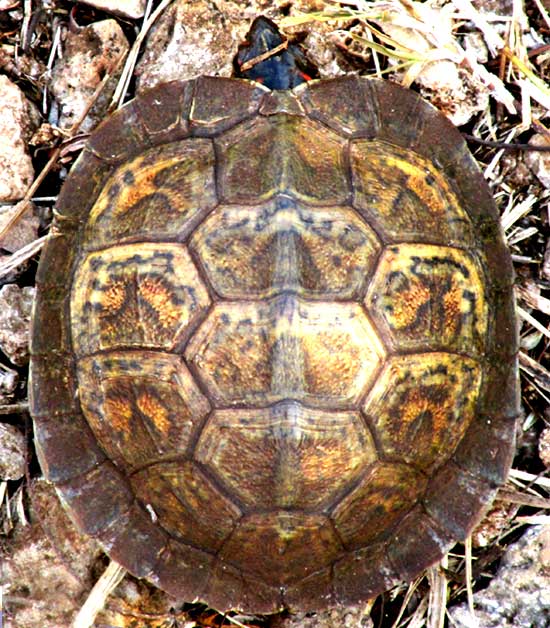
The plastron is shown below, the turtle's small size apparent from the size of my fingers:
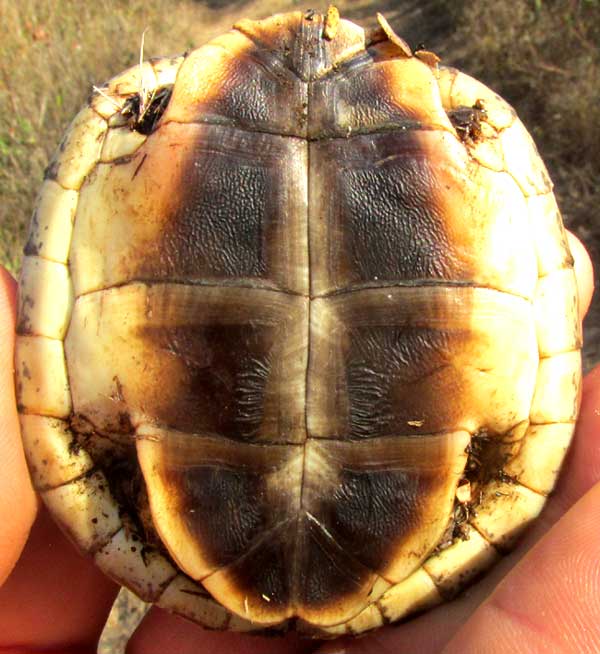
Below you can see that the bottom part, the plastron, is not hinged, a feature separating mud turtles from wood turtles.
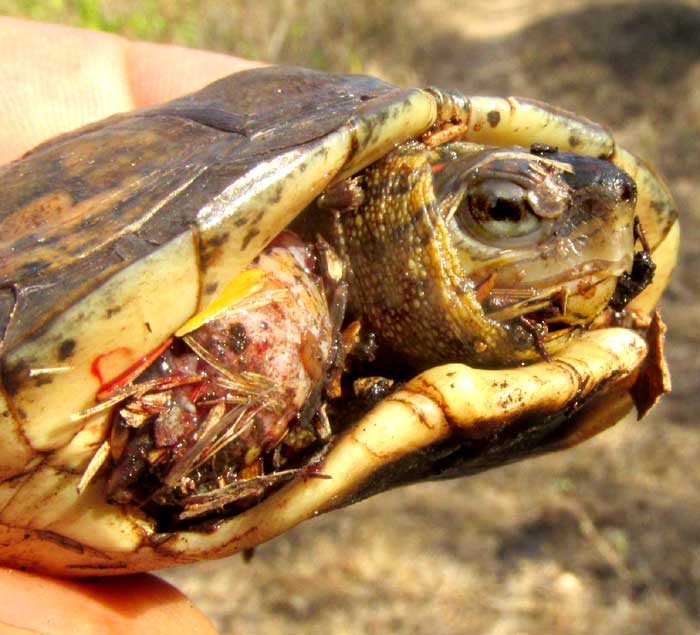
Suspecting that the turtle needed a drink, I transported him to the hut and put him in a pan of water. You can see him drinking below:
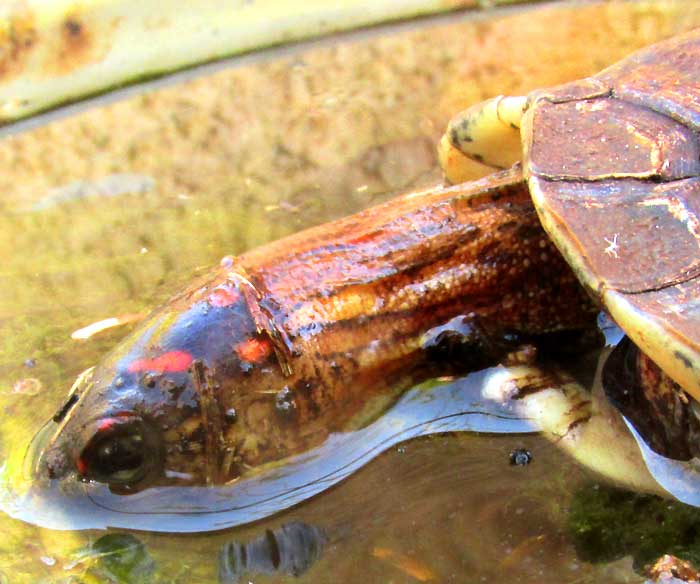
Afterwards I let him go, after showing where a pan beneath the sink's output was placed for thirsty animals in general.